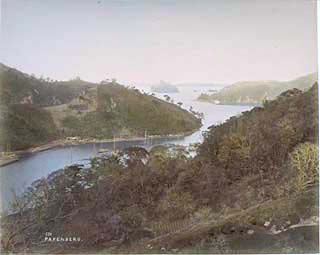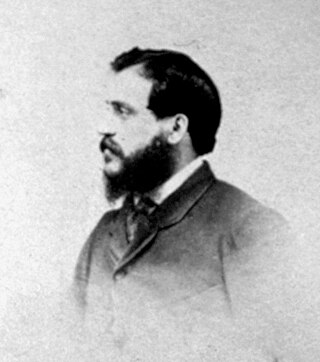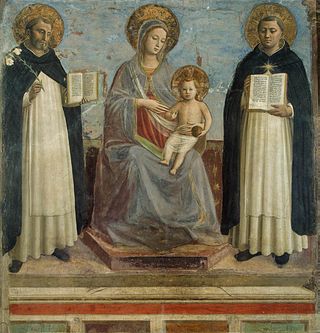Beato may refer to:
Beato may refer to:

Fra Angelico, OP was a Dominican friar and Italian painter of the Early Renaissance, described by Giorgio Vasari in his Lives of the Artists as having "a rare and perfect talent". He earned his reputation primarily for the series of frescoes he made for his own friary, San Marco, in Florence, then worked in Rome and other cities. All his known work is of religious subjects.

Pascal Sébah was an Ottoman photographer in Istanbul and Cairo. Best known for his prolific photography of Anatolia, Egypt, and Greece, Sébah established the studio that would later become Sébah & Joaillier.

Antonio Tabucchi was an Italian writer and academic who taught Portuguese language and literature at the University of Siena, Italy.
Felice A. Beato and Felice Antonio Beato are collective signatures used by the brothers Felice Beato and Antonio Beato, who were both pioneering photographers in the 19th century. They were noted for their depictions of everyday life in Orient.

War photography involves photographing armed conflict and its effects on people and places. Photographers who participate in this genre may find themselves placed in harm's way, and are sometimes killed trying to get their pictures out of the war arena.

James Robertson (1813–1888) was an English gem and coin engraver who worked in the Mediterranean region, and who became a pioneering photographer working in the Crimea and possibly India. He is noted for his Orientalist photographs and for being one of the first war photographers.

Antonio Beato, also known as Antoine Beato, was an Italian-British photographer. He is noted for his genre works, portraits, views of the architecture and landscapes of Egypt and other locations in the Mediterranean region. He was the younger brother of photographer Felice Beato (1832–1909), with whom he sometimes worked. Antonio and his brother were part of a small group of commercial photographers who were the first to produce images of the Orient on a large scale.

Hippolyte Arnoux was a French photographer and publisher. He was one of the first photographers to produce images of Egypt and documented the Suez Canal project with extensive photographs and a publication.

Adolfo Farsari was an Italian photographer based in Yokohama, Japan. His studio, the last notable foreign-owned studio in Japan, was one of the country's largest and most prolific commercial photographic firms. Largely due to Farsari's exacting technical standards and his entrepreneurial abilities, it had a significant influence on the development of photography in Japan.

The firm of Stillfried & Andersen, also known as the Japan Photographic Association, was a photographic studio founded by Baron Raimund von Stillfried and Hermann Andersen that operated in Yokohama, Japan between 1876 and 1885. The studio is noted for its portraits and landscapes that were often hand-coloured and presented in bound albums. The firm also produced photographic prints from negatives by Felice Beato.

Felice Beato, also known as Felix Beato, was an Italian–British photographer. He was one of the first people to take photographs in East Asia and one of the first war photographers. He is noted for his genre works, portraits, and views and panoramas of the architecture and landscapes of Asia and the Mediterranean region. Beato's travels gave him the opportunity to create images of countries, people, and events that were unfamiliar and remote to most people in Europe and North America. His work provides images of such events as the Indian Rebellion of 1857 and the Second Opium War, and represents the first substantial body of photojournalism. He influenced other photographers, and his influence in Japan, where he taught and worked with numerous other photographers and artists, was particularly deep and lasting.
The Pinacoteca Civica of Forlì, one of the civic museums of Forlì and currently based in the Musei di San Domenico, is an Italian art gallery. Artists whose work the gallery exhibits include:

The Coronation of the Virgin is a painting by the Italian early Renaissance master Fra Angelico, executed around 1434–1435 in Fiesole (Florence). It is now in the Musée du Louvre of Paris, France. The artist executed another Coronation of the Virgin, now in the Uffizi in Florence.

The Galleria nazionale di Parma is an art gallery in Parma, northern Italy.

Igino Benvenuto Supino was an Italian painter, art critic, and historian.
Felice is a name that can be used as both a given name, masculine or feminine, and a surname. It is a common name in Italian, where it is equivalent to Felix. Notable people with the name include:

Madonna and Child is a c.1435 fresco fragment by the Italian Renaissance master Fra Angelico in the sacra conversazione style. It was originally painted in the dormitory of the Convent of San Domenico, Fiesole. It was removed from the wall after the convent's suppression during the Napoleonic occupation of Italy and is now in the Hermitage Museum in St Petersburg.

Crucifixion with Mourners and St Dominic is a fresco fragment by the Italian early Renaissance painter Fra Angelico, executed c. 1435, from the refectory of the Convent of San Domenico, Fiesole, now in the Louvre.

The Virgin Reliquaries are four 1434 panel paintings by Fra Giovanni Masi after drawings by Fra Angelico, intended as tabernacle-reliquaries for the Convent of Santa Maria Novella. One is in the Isabella Stewart Gardner Museum in Boston whilst the rest are in the Museo nazionale di San Marco in Florence.

Photography in India refers to both historical as well as to contemporary photographs taken in modern-day India.